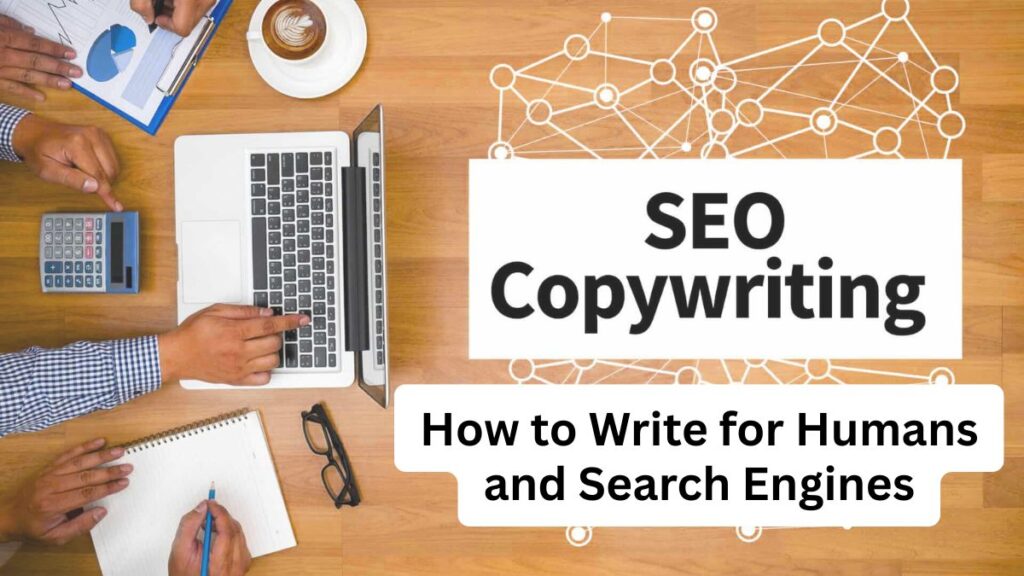Have you ever written what you thought was a great article, only to find it buried on page 5 of Google? Or maybe your content ranks well but doesn’t keep readers engaged.
The secret to solving both problems is SEO copywriting—the art of writing content that appeals to both search engines and human readers.
In this guide, you’ll learn:
✅ How to write content that ranks on Google
✅ How to keep readers engaged (so they stay longer)
✅ Step-by-step SEO copywriting techniques
✅ Real-world examples of effective SEO writing
Whether you’re a blogger, marketer, or business owner, this guide will help you master SEO-friendly writing.
What is SEO Copywriting?
SEO copywriting is the process of writing content that:
✔ Ranks well in search engines (Google, Bing)
✔ Engages human readers (keeps them reading)
It’s not about stuffing keywords or tricking algorithms—it’s about writing valuable content that naturally attracts both search engines and users.
Why Does SEO Copywriting Matter?
- Higher rankings → More traffic
- Better user experience → Longer visits, lower bounce rates
- More conversions → Readers take action (buy, subscribe, share)
Now, let’s dive into the step-by-step process of writing SEO-optimized content.
Keyword Research (Find What People Search For)
Before writing, you need to know what people are searching for.
How to Find the Right Keywords
- Use Google Suggest – Type your topic in Google and see autocomplete suggestions.
- Example: Type “best running shoes” → Google suggests “best running shoes for flat feet.”
- Use Keyword Research Tools
- Free: Google Keyword Planner, Ubersuggest, AnswerThePublic
- Paid: Ahrefs, SEMrush, Moz
- Check Competitors – See what keywords top-ranking pages are using.
Choosing the Best Keyword
- Search volume (How many people search for it?)
- Keyword difficulty (Can you rank for it?)
- User intent (What do searchers want? Information, product, review?)
Example:
- Target keyword: “how to start a blog”
- Search intent: Informational (people want a step-by-step guide)
Write a Click-Worthy Title & Meta Description
Your title and meta description appear in Google search results. They impact clicks and rankings.
How to Write an SEO-Friendly Title
✔ Include your main keyword (near the beginning)
✔ Keep it under 60 characters
✔ Make it compelling (use power words like “Ultimate,” “Proven,” “Easy”)
Bad Title: “Blogging Tips”
Good Title: “How to Start a Blog in 2024: A Step-by-Step Guide for Beginners”
How to Write a Meta Description
✔ Summarize the article in 150-160 characters
✔ Include the keyword naturally
✔ Add a call-to-action (CTA)
Example Meta Description:
“Want to start a blog? This step-by-step guide shows you how to create a successful blog in 2024—from choosing a niche to publishing your first post.”
Structure Your Content for Readability & SEO
Google loves well-organized content. Use this structure:
1. Introduction
- Hook the reader (ask a question, share a stat, tell a story)
- Explain what they’ll learn
2. Headings & Subheadings (H2, H3, H4)
- Break content into scannable sections
- Include keywords naturally
Example Structure:
text
Copy
Download
H1: How to Start a Blog in 2024 H2: Choose Your Blog Niche H2: Pick a Domain Name H2: Set Up Hosting H3: Best Hosting Providers for Beginners H2: Install WordPress H2: Write Your First Blog Post
3. Use Short Paragraphs & Bullet Points
- Large blocks of text scare readers away
- Keep paragraphs 2-3 sentences max
- Use bullet points for lists
Bad:
“Starting a blog requires choosing a niche, picking a domain name, setting up hosting, installing WordPress, and writing content.”
Good:
To start a blog, follow these steps:
✔ Choose a niche
✔ Pick a domain name
✔ Set up hosting
✔ Install WordPress
✔ Write your first post
Optimize Your Content for SEO
1. Keyword Placement
- Use the keyword in:
- Title
- First 100 words
- Subheadings (H2, H3)
- Meta description
- URL
- Image alt text
But don’t overdo it—write naturally.
2. Internal & External Links
- Internal links → Link to other related posts on your site
- External links → Link to authoritative sources (Google trusts this)
3. Optimize Images
- Compress images (use TinyPNG)
- Add alt text with keywords (e.g., “how-to-start-a-blog-guide”)
Write for Humans First, Google Second
The best SEO content solves a problem and keeps readers engaged.
Tips for Engaging Content
✔ Write in a conversational tone (like you’re talking to a friend)
✔ Use examples & stories to explain concepts
✔ End with a CTA (ask a question, encourage comments, suggest sharing)
Final SEO Copywriting Checklist
Before publishing, ask:
✅ Is my keyword included naturally?
✅ Is the content easy to read? (Short paragraphs, subheadings)
✅ Did I add internal/external links?
✅ Are images optimized?
✅ Does the meta description encourage clicks?
SEO copywriting isn’t about tricking Google—it’s about writing valuable content that ranks AND keeps readers hooked.
By following these steps, you’ll create content that:
✔ Ranks higher in search engines
✔ Engages readers (lower bounce rate)
✔ Converts visitors into subscribers/customers
Now it’s your turn—start applying these tips to your next blog post!


